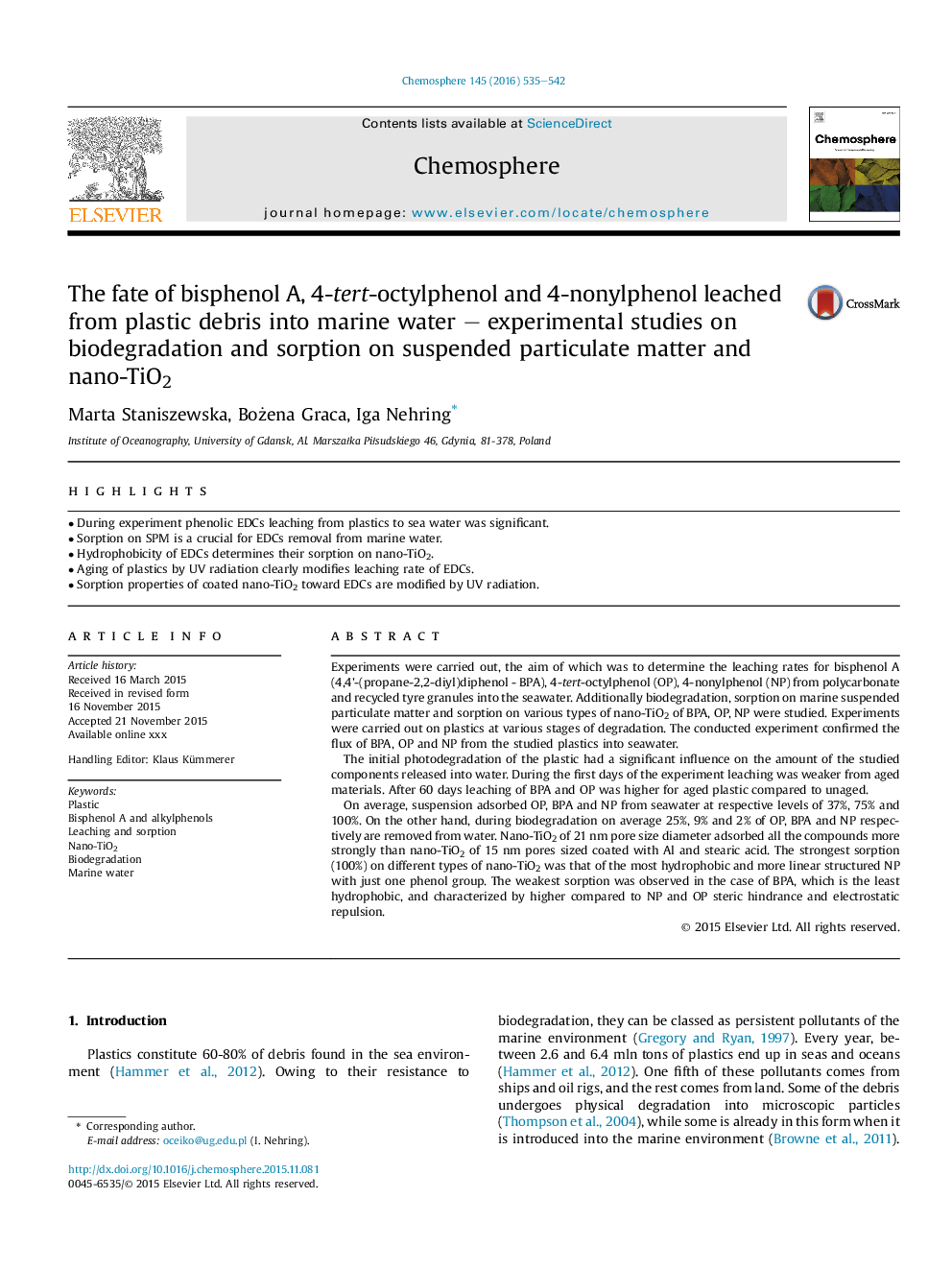| Article ID | Journal | Published Year | Pages | File Type |
|---|---|---|---|---|
| 6307062 | Chemosphere | 2016 | 8 Pages |
Abstract
On average, suspension adsorbed OP, BPA and NP from seawater at respective levels of 37%, 75% and 100%. On the other hand, during biodegradation on average 25%, 9% and 2% of OP, BPA and NP respectively are removed from water. Nano-TiO2 of 21Â nm pore size diameter adsorbed all the compounds more strongly than nano-TiO2 of 15Â nm pores sized coated with Al and stearic acid. The strongest sorption (100%) on different types of nano-TiO2 was that of the most hydrophobic and more linear structured NP with just one phenol group. The weakest sorption was observed in the case of BPA, which is the least hydrophobic, and characterized by higher compared to NP and OP steric hindrance and electrostatic repulsion.
Related Topics
Life Sciences
Environmental Science
Environmental Chemistry
Authors
Marta Staniszewska, Bożena Graca, Iga Nehring,
